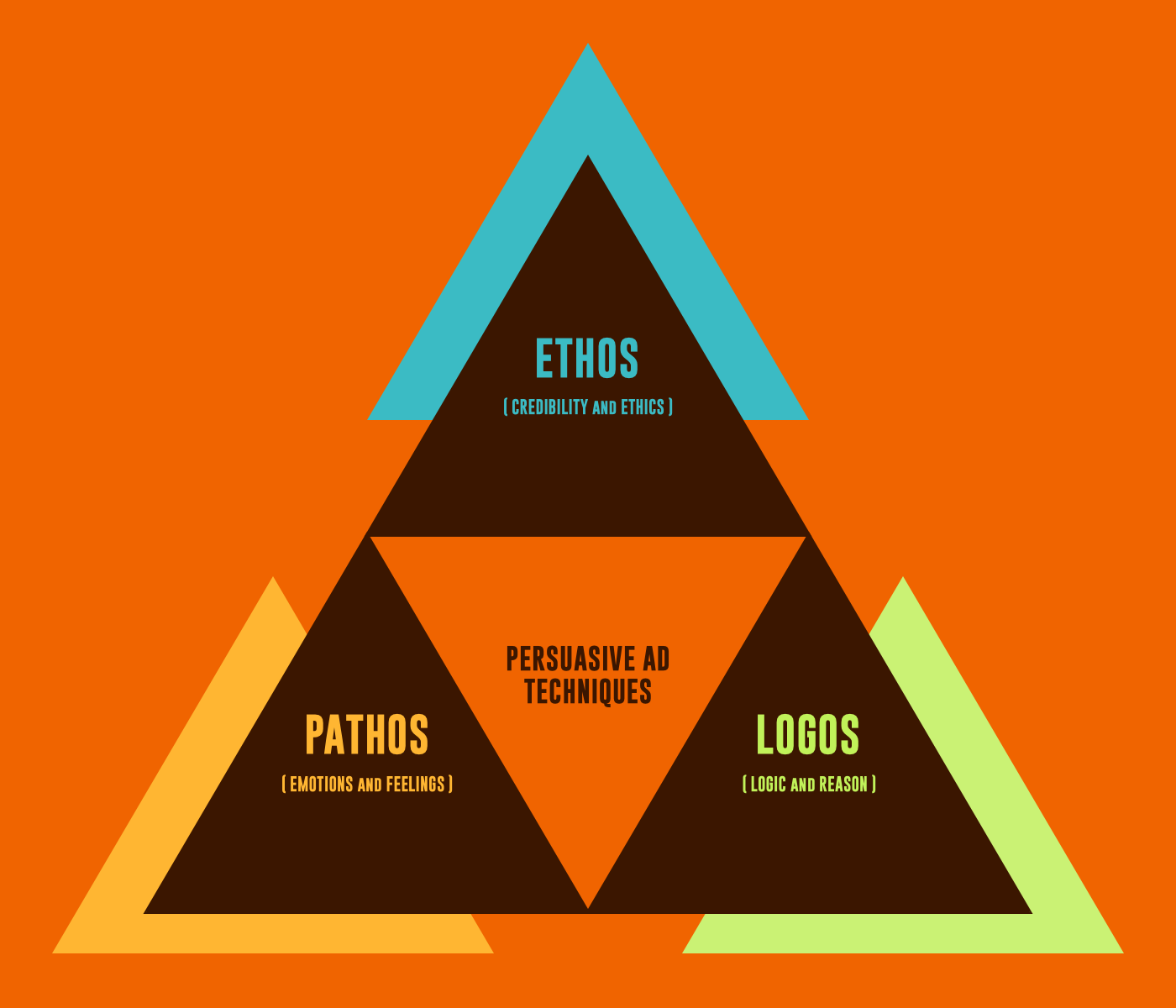The OSes, consisting of Ethos, Logos, and Pathos, are three pillars of persuasion. They stem from Rhetoric, or Ars Rhetorica, an ancient Greek treatise on the art of persuasion, given credit to Aristotle, through his Corpus Aristotelicum, otherwise known as the collection of his works. We are going to lay out a list of logical fallacies in the next private essay, but before we do so it is important to define these terms publicly.
Ethos or the ethical appeal, means to convince an audience of the author’s credibility or character. By who they are.
Pathos or the emotional appeal, means to persuade an audience by appealing to their emotions. By what they feel.
Logos or the appeal to logic, means to convince an audience by use of logic or reason. By what they think.
Much of storytelling harkens back to Aristotle’s “Poetics.” Which has laid the foundation for classical theatre writing, and other forms of modern storytelling such as cinema. In it, Aristotle wrote:
Of the modes of persuasion furnished by the spoken word there are three kinds. The first kind depends on the personal character of the speaker; the second on putting the audience into a certain frame of mind; the third on the proof, or apparent proof, provided by the words of the speech itself.
These three pillars are at the root of “idea selling” much of which today has been diluted into what has become advertising. As there is no other field which aims to persuade more and advertising is now about telling a story in order to sell a product.
Ethos, being the greek word for character, is often considered the character or spokesperson delivering information. Ethos means someone knows more than you, and is trustworthy, and reliable. This is great if it's from a wise elder, or just plain amazingly illuminated human, but bad when it’s from supposed experts or a superior character in their field. Professors, medical professionals, gurus, or worst of all, celebrities. This is why you often see a famous person in an ad seen on camera or doing the ads narration rather than just someone
like your sister or brother. The spokesperson is said to validate the product and unlock trust to the “consumer” by having apparent weight and authority. And unconscious people will listen to them. Whether or not they have product-specific expertise such as a famous actor trying to sell you power tools, or something way outside and having nothing to do with their area of expertise.
Pathos is used in persuading folks for a cause or moral responsibility. Appealing and pulling at their heart strings of empathy. Beer commercials are famous for this one. Trying to always tie their brand with American heritage. Or ordinary everyday people, cut from the same cloth as the majority of the audience. Here’s a statement before you by someone one stage or in an old school TV commercial about sick starving children in Africa, with flies all over their face. Help them! Or oftentimes using animals and loving cute baby ones at that to make you appeal to a moral message. Pathos is king in what’s called bandwagon advertising, which is you, as the observer and agreeing with their message, is then felt to be on the winning team or popular opinion. Both recurring logical fallacies have been used as key tools of propaganda through time.
Logos usually tries to be pointing out facts to back up a claim. Which through time have not really been facts, but prevced scientific facts which far too often then not, end up being some level of psyto science. Like drink your milk, its full of calcium for strong bones. Which give very gross oversimplifications to a more complex and multi-layered nutricional issue. Or the old school 19080’s propaganda campaign of this is your brain showing an egg in its shell, and this is your brain on drugs showing the egg being cracked and put into the frying pan. Implying something that is supposedly logical based on pre-existing mis-conceptions. Statistics, surveys, facts, and historical data can make a product seem like a more reasonable decision. Whether the data is sound or not is another story.
These modalities are often used together, for like the infinity stones from the Marvel universe, they work best when unified. There was a famous 1970’s American commercial of a native american riding a canoe down a river, looking like it could have been out of the old american times before it was settles by Europeans. He gets out of the canoe onto a beach which is covered in trach, and walks over to a freeway packed with cars, revealing it’s modern times, and a vehicle driving by throws a bag of trash out the window which lands at his feet. He’s then seen breaking the fourth wall as it’s called in theatre and cinema, with us going from objective to subjective, meaning looking at the audience or camera, and a tear is seen coming from his eye.
It was very common in the 1950’s to have a family go out to a public park for a picnic and then subsequently leave their trash strewn everywhere, this “dump your trash anywhere you want” mindset, continued into the 60’s and then started to more enter the public consciousness in the 19070’s for example. And this commercial, which was actually a public service announcement for 71 things you can do to mitigate pollution, was a result of the general populous starting to care more about the issue and then have public trash cans installed ubiquitously in American towns and cities. This campaign was extremely successful. As it used Ethos, the native american figure - A type of person who is stereotypically to this day seen as being "one with nature" or an authority on the subject, Pathos, saying hey all this trash everywhere is making out public spaces un-atractive and having a detrimental effect on the environment, and Logos, showing that this was a common occurrence which at a societal level needed to change. As a result from political movements of the time and successful campaigns such as this one, into the 80’s and 90’s it became standard operating procedure to put your trash into a garbage can and to this day if you do not, you are the prick. Future advertising campaigns into the early 2000’s have done the same for recycling and composting, and into the 20teens for now removing use of plastic bags and straws all together.
So obviously these can be used for good or bad ends. And it's good to know how they are deployed. Usually separated by the numerator denominator line of are they trying to sell me something, or are they just providing me with useful and truly educational information.
When I write and then speak, I always try to insert rays of bright illumination to what may be a stormy cloud over the reader or listener. This is achieved partially by exhibiting an inherent truth in what I’m saying. So even if you’ve never heard it before, aren’t sure about it, or it’s just plain over your head, there is something about my work which rings true for you. This manifests itself in each of the aforementioned modes. As it's better to inspire first, persuade second, and promote third instead of doing each of those steps the other way around.

